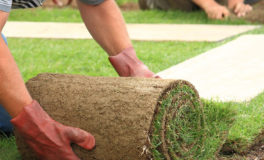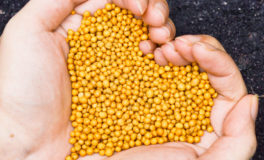Turf is an easier alternative to seeding a grass lawn. Laying down new turf is a simple enough process especially with Turfonline’s range of Garden Lawn, Jubilee and Species Rich turf. But that being said, even professional landscapers hit problems when turfing a lawn. Thankfully, some problems are easily prevented.
This article will tackle some of the common problems seen in getting, laying and managing new turf on a lawn, and give you expert advice for each from our experienced Turf Online team.
Common turfing problems include:
- complications with deliveries
- sod heating
- tender turf rolls breaking up
- running out of turf
- dry turf
- shrinkage
- uneven lawn surface
Let’s look at these in turn…….
Delivery Difficulties
Perhaps the most frustrating problem, because you can’t even lay your turf until it has been delivered. Delivery problems are probably one of our biggest headaches, even as one of the UK’s best turf suppliers, so Turf Online’s drivers offered us some tips that can easily avoid complications.
Turf is normally delivered on an articulated lorry with either a rear-mounted forklift or a tail-lift and pallet truck. It’s quite a sizable vehicle and it needs to get quite close to your property before it can offload, so please make sure there’s plenty of space for the lorry to park and unload. If you live near a school, please let us know and we’ll avoid turning up at drop off and pick up times.
Additionally, if Turf Online is delivering to your home and the driver has a tail lift vehicle with a pallet truck, he’s going to need good access to where he will be dropping your turf off. A full pallet of turf is heavy, and it’s very difficult to pull a heavy load over a curb or up a slope. It’s even harder to move it if the surface is soft or loose. Our advice is, be prepared by having some boards to hand that will make an easy surface for the pallet truck to travel on.
Sod Heating
Sod heating is mercifully easy to prevent. Simply make sure that the soil is ready to be turfed before the turf arrives. As soon as it arrives, start laying the turf by breaking the pallet into smaller piles – the smaller the better. Finally, don’t water the turf while it’s rolled up, but soak it as soon as it is fully installed.
Read more about sod heating here
Turf Rolls Breaking Up
Sometimes, but not often, rolled turf is a little tender. Particularly, in hot weather. If you’re turf is tender treat it gently by lifting the rolls with your hands placed underneath them and then cradling them. After that, place them on the ground carefully rather than dropping them and use two hands to manoeuvre them into place and then unroll them slowly. If a roll of turf does tear, don’t panic. It will establish just as well as if it were in one piece. Just be patient and install it as best you can.
Running Out of Turf
Believe me, if you find yourself short of just a few rolls of turf, you won’t be the first person – or the last to have done it.
Avoid the situation by measuring carefully before you place your order. Double-check your measurements, make sure they are in metres (not yards) and use our turf calculator to make sure you have worked out your requirements correctly. Always add an extra 5-10% to allow for trimming and wastage as from customer experience this will save you any unnecessary hassle.
If you don’t have quite enough turf and you don’t want to redesign your garden to accommodate a smaller lawn, please phone our customer services team. We’ll find the most cost-effective way of helping you make up the shortfall. It may mean you need to take your car to a local garden centre to buy the extra (matching) rolls.
Dry Turf
In high summer, turf growers sometimes deliberately stop irrigating. That’s because drier turf is less prone to sod-heating than lovely lush grass.
If your new turf seems on the dry side, that’s nothing to worry about, provided you water it as soon as it’s laid and keep watering regularly until it’s established.
Gaps Between Turf
If you’re seeing gaps between turfs, this might mean your turf is shrinking. Assuming it’s been properly laid, gaps should not develop between the turf. If they do, it’s a sure sign that your turf is not getting enough water. Irrigate thoroughly from day one to prevent any shrinkage.
If you are stuck with gaps in your turf, increase watering for a few days, and then fill the gaps. Use this guide on how to fill the gaps in your turf and repair it back to its best.
Uneven Lawn Surface
An uneven surface on your new lawn can be avoided with a 2-fold approach.
First, when preparing the soil, make sure you firm it down well by doing the “gardener’s shuffle” after digging and raking. To check that the soil is level, tie a piece of rope to each end of a heavy plank. Pull the plank along the surface and any lumps and bumps will immediately show themselves.
Secondly, always use laying boards to walk on prepared soil and on new turf. Don’t leave the boards sitting on top of the new turf because they’ll turn the grass yellow and you’ll have a different problem to overcome. Rather, lay the boards out each time you cross the lawn or stand on it to do the watering.
Any questions?
If you have any worries about your turf delivery, laying turf or caring for it in the early days, please feel free to contact the Turfonline team.
If DIY turfing doesn’t sound like your cup of tea, a professional landscaper can offer good value. Find a landscaper near you by checking the directory on the BALI website.

 Where to find the right tools for turfing
Where to find the right tools for turfing  Pre-turfing fertiliser, do I really need it?
Pre-turfing fertiliser, do I really need it?  How to prepare your soil for turfing
How to prepare your soil for turfing 

